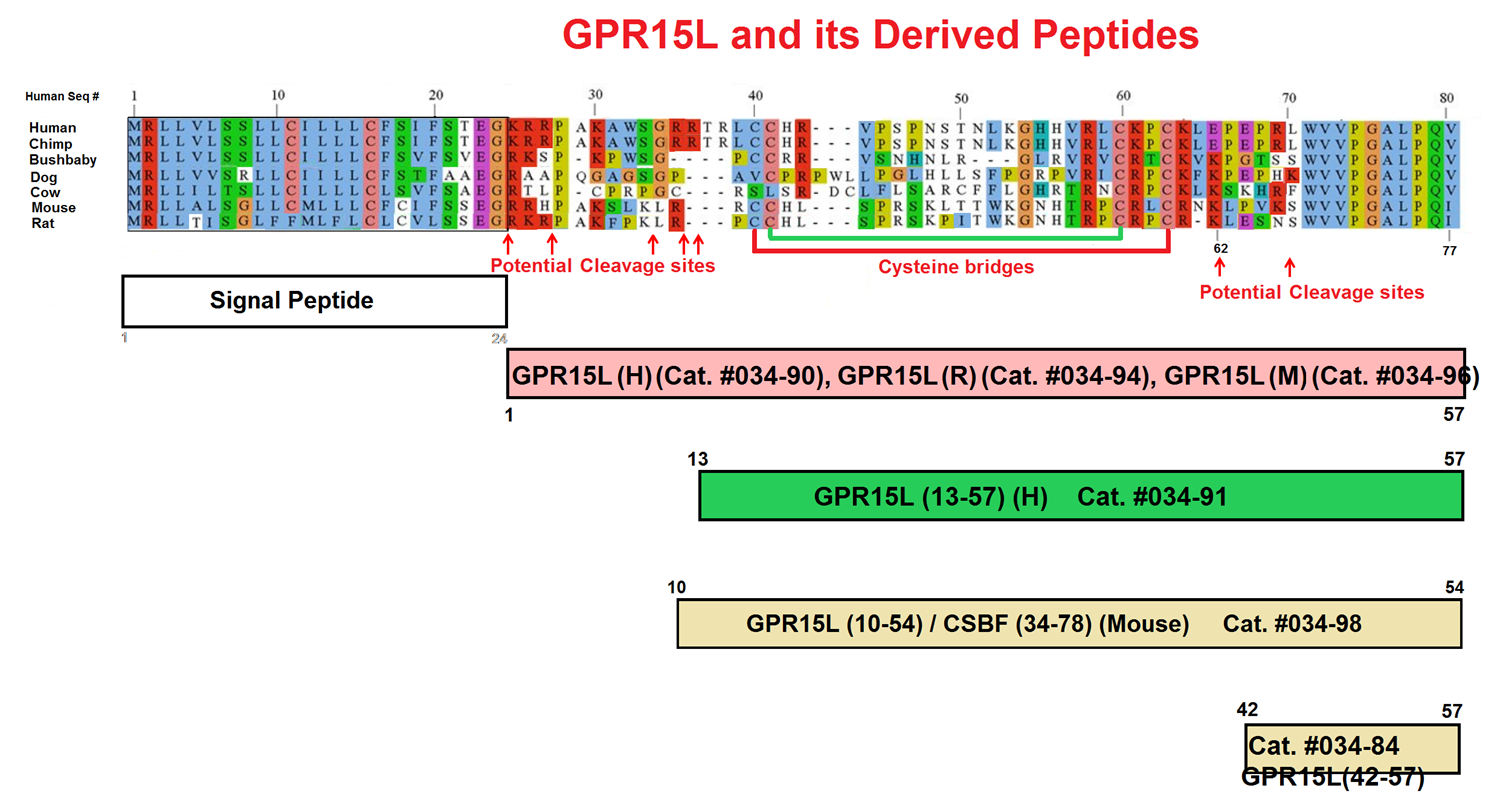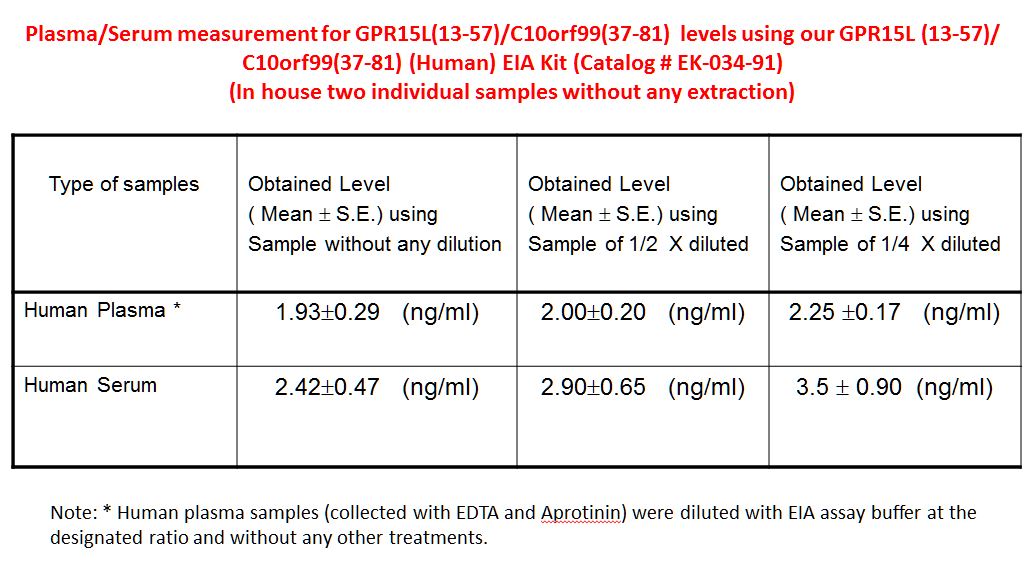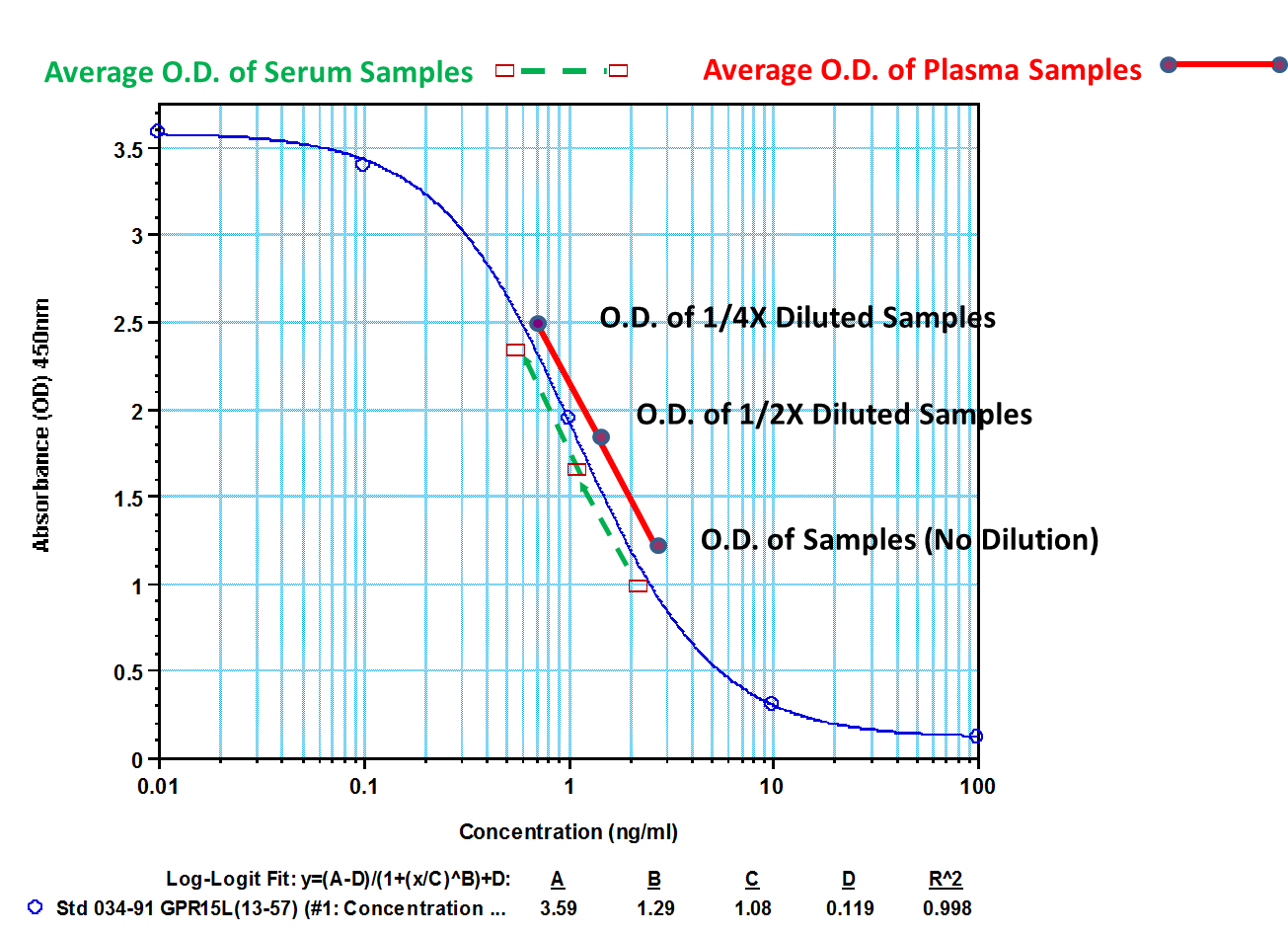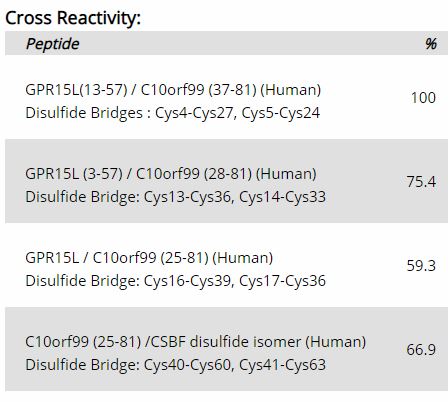Catalog # |
Size |
Price |
|
|---|---|---|---|
| 034-84 | 100 µg | $150 |
 )
)
|
Glu-Pro-Glu-Pro-Arg-Leu-Trp-Val-Val-Pro-Gly-Ala-Leu-Pro-Gln-Val
|
| 1787.07 | |
|
| ≥ 95% |
|
| Exhibits correct molecular weight |
|
|
Up to 6 months in lyophilized form at 0-5°C. Long-term storage may form a dimerized peptide.
|
|
| Each vial contains 100 µg of NET peptide. |




Abstract: The 57-mer full-length GPR15L(25-81) peptide has been identified as the principal endogenous agonist of the G protein-coupled receptor GPR15. Its main activity resides in the C-terminal 11-mer GPR15L(71-81), which has full efficacy but ~40-fold lower potency than the full-length peptide. Here, we systematically investigated the structure-activity relationship of GPR15L(71-81) by truncations/extensions, alanine-scanning, and N- and C-terminal capping.The authors used Phoenix’s GPR15L/C10orf99 (25-81) (Human) (Cat. #034-90) for their study.
Abstract: GPR15 is a G-protein-coupled receptor (GPCR) that directs lymphocyte homing to the colon and skin. Recent studies have identified a chemokine-like protein GPR15L (also known as C10orf99) as a functional ligand of GPR15. In this study, we examined the structural elements that regulate the GPR15-GPR15L interaction with primary focus on post-translational modifications (PTMs) of receptor N-terminus and on the C-terminus of the ligand. Our findings reveal that the GPR15 receptor is sulfated on the N-terminal tyrosine residue(s) and disruption of tyrosine sulfation inhibits binding of GPR15L.The authors used Phoenix’s GPR15L/C10orf99 (25-81) (Human) (Cat. #034-90) for their study.
Abstract: The peptidergic system is the most abundant network of ligand-receptor-mediated signaling in humans. However, the physiological roles remain elusive for numerous peptides and more than 100 G protein-coupled receptors (GPCRs). Here we report the pairing of cognate peptides and receptors. Integrating comparative genomics across 313 species and bioinformatics on all protein sequences and structures of human class A GPCRs, we identify universal characteristics that uncover additional potential peptidergic signaling systems. Using three orthogonal biochemical assays, we pair 17 proposed endogenous ligands with five orphan GPCRs that are associated with diseases, including genetic, neoplastic, nervous and reproductive system disorders. We also identify additional peptides for nine receptors with recognized ligands and pathophysiological roles. This integrated computational and multifaceted experimental approach expands the peptide-GPCR network and opens the way for studies to elucidate the roles of these signaling systems in human physiology and disease.
Foster SR, Hauser AS, Vedel L, et al. Discovery of Human Signaling Systems: Pairing Peptides to G Protein-Coupled Receptors. Cell. 2019;179(4):895-908.e21.
Abstract: Accurate biomarker-based diagnosis of psoriasis vulgaris has remained a challenge; no reliable disease-specific biomarkers have yet been identified. There are several different chronic inflammatory skin diseases that can present similar clinical and dermoscopy features to psoriasis vulgaris, making accurate diagnosis more difficult. Both literature-based and data-driven selection of biomarker was conducted to select candidates for a multicomponent biomarker for psoriasis vulgaris. Support vector machine-based classification models were trained using gene expression data from locally recruited patients and validated on 7 public datasets, which included gene expression data of other inflammatory skin diseases in addition to psoriasis vulgaris. The resulting accuracy of the best classification model based on the expression levels of 4 genes (IL36G, CCL27, NOS2 and C10orf99) was 96.4%, outperforming classification based on other marker gene combinations, which were more affected by variability in gene expression profiles between different datasets and patient groups. This approach has the potential to fill the void of clinically applicable diagnostic biomarkers for psoriasis vulgaris and other inflammatory skin diseases.Reimann E, Lättekivi F, Keermann M, et al. Multicomponent Biomarker Approach Improves the Accuracy of Diagnostic Biomarkers for Psoriasis Vulgaris. Acta Derm Venereol. 2019;
Abstract: Chemoattractants control lymphocyte recruitment from the blood, contributing to the systemic organization of the immune system. The G protein-linked receptor GPR15 mediates lymphocyte homing to the large intestines and skin. Here we show that the 9 kDa CC-motif containing cationic polypeptide AP57/colon-derived sushi containing domain-2 binding factor (CSBF), encoded by C10orf99 in the human and 2610528A11Rik in the mouse, functions as a chemokine ligand for GPR15 (GPR15L). GPR15L binds GPR15 and attracts GPR15-expressing T cells including lymphocytes in colon-draining lymph nodes and Vγ3+ thymic precursors of dermal epithelial T cells. Patterns of GPR15L expression by epithelial cells in adult mice and humans suggest a homeostatic role for the chemokine in lymphocyte localization to the large intestines, as well as a role in homing to the epidermis during wound healing or inflammation. GPR15L is also significantly expressed in squamous mucosa of the oral cavity and esophagus with still poorly defined regulation. Identification of the chemotactic activity of GPR15L adds to its reported antibacterial and tumor cell growth regulatory functions and suggests the potential of targeting GPR15L-GPR15 interactions for modulation of mucosal and cutaneous inflammation.Ocón B, Pan J, Dinh TT, et al. A Mucosal and Cutaneous Chemokine Ligand for the Lymphocyte Chemoattractant Receptor GPR15. Front Immunol. 2017;8:1111.


No References
| Catalog# | Product | Size | Price | Buy Now |
|---|
Social Network Confirmation